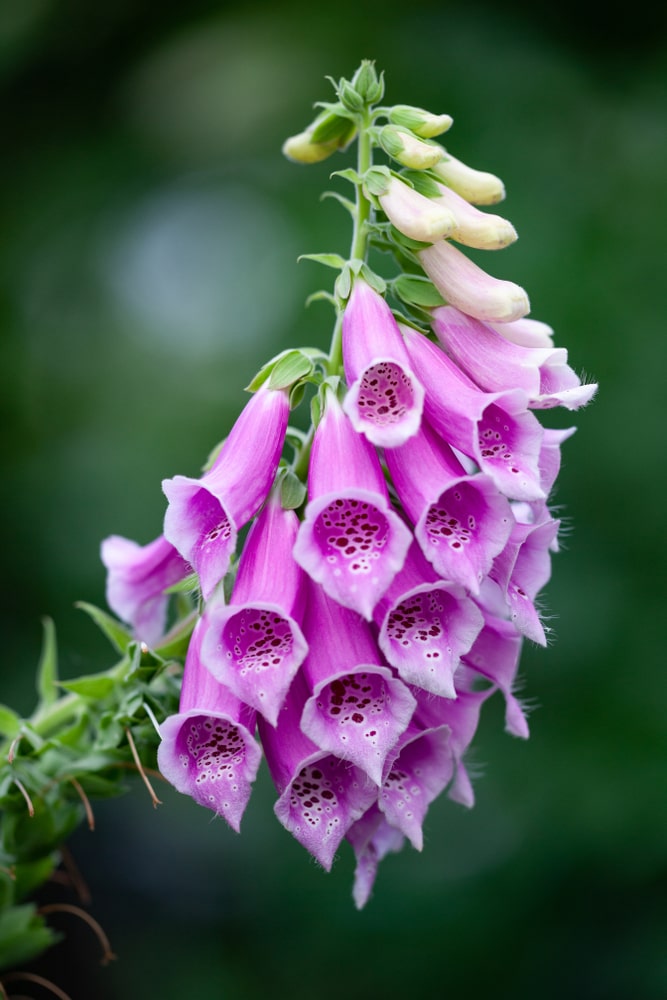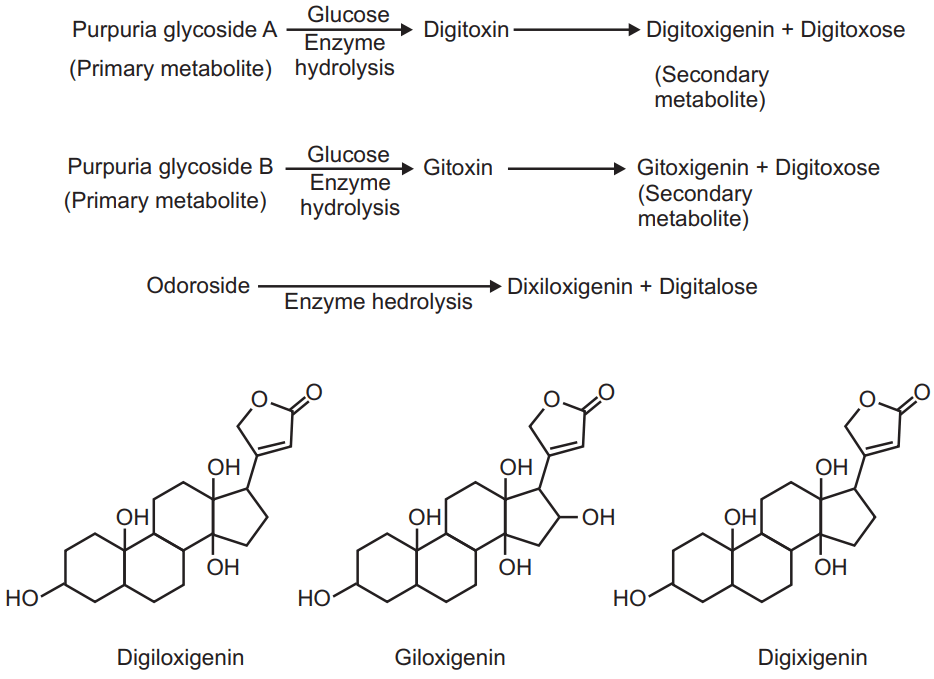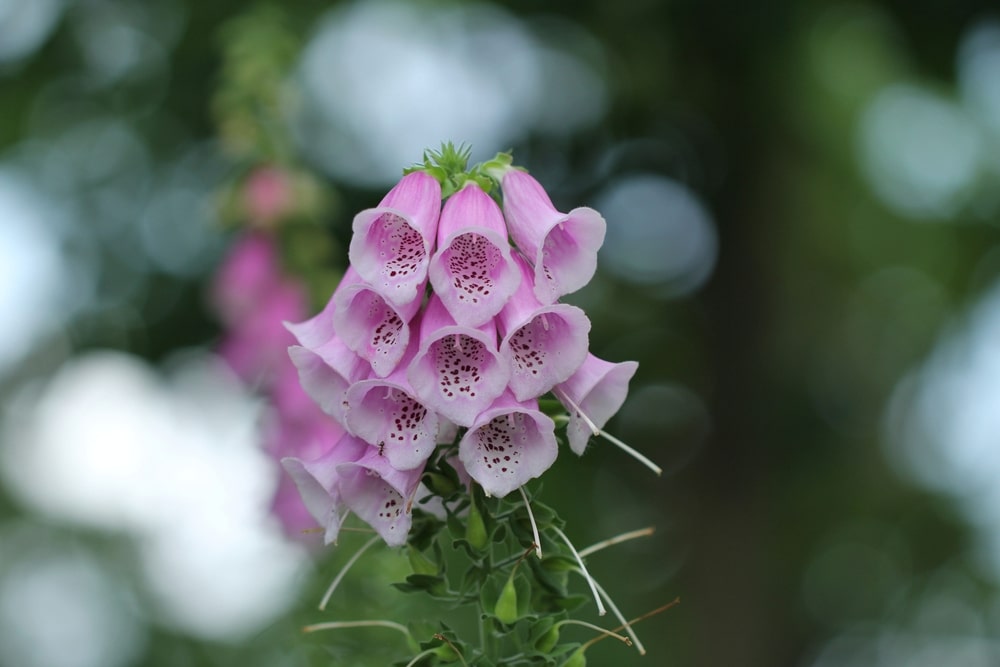Digitalis drug obtained from the dried leaves of the common foxglove (Digitalis purpurea) and used in medicine to strengthen contractions of the heart muscle.
- Synonym: Digitalis leaf, Foxglove leaves
- Biological source: Digitalis (purple foxglove leaves) consist of the dried leaves of Digitalis purpurea. It is dried at a temperate below 60 immediately after collecting the leaves. It should not contain more than 5 per cent of moisture.
- Family: Scrophulariaceae
Geographical Source of Digitalis
Table of Contents
Digitalis is native of Western Europe, British Island and USSR countries. The crop is being cultivated in France, Germany, United Kingdom and Hungary. It has been introduced as an ornamental plant throughout North America, Canada, Mexico, Central America and Asia. In India, it is cultivated in Northern states like Jammu and Kashmir, Himachal Pradesh and hilly areas of South India.
Cultivation and Collection
It requires well-drained calcareous, sandy loam soil which should be rich in organic matter. Lime rich soil is essential for proper growth and glycosidic content of Digitalis lanata but harmful for Digitalis purpurea which require acidic soil. The climatic conditions which are required for luxuriant growth are well-distributed rainfall (30-40 cm per annum), good sunshine and a temperature range between 20-30°C. For cultivation of Digitalis, the seeds can be sown directly or first nursery rising and then transplanted in the field. Harvesting depends on some factors like age of leaves, time of day and length of leaves. These factors are very important for glycosidic content. The cardio activity of leaves is higher when the leaves are harvested during the hotter part of the day i.e. midday and lowest at midnight. The leaves are collected when they are well developed and attain 8-10 m in length. The collected leaves should dry at 50-60oC.

Macroscopic Characters of Digitalis
It is erect branched biennials attaining a height of 60-90 cm. Leaves are a simple alternate opposite. It is an insect-pollinated plant, bees being the main pollinator. The colour of leaves is dark greyish green having a slight odour or odourless, bitter taste. The leaves are ovate-lanceolate to broadly ovate having size is about 10-40 cm in length and 4-20 cm in width.
Chemical Constituent

Digitalis contains a 0.2-0.45 per cent mixture of both primary and secondary cardiac glycoside (cardenolide). Purpurea glycoside A & B and glucogitaloxin are primary glycosides possessing at C-3 of the aglycone, a linear chain of 3 digitoxose moieties terminated by glucose. It also contains many other glycosides viz odoroside H, gitaloxin, verodoxin and glucoverodoxin. The primary glycosides are less absorbed and less stable than secondary glycosides such as digitoxin, gitoxin and gitaloxin. The products of hydrolysis of purpurea glycoside A and purpurea glycoside B are shown in Fig.2.
Additionally, it also contains 2 saponins glycoside i.e. digitonin and gitonin. The total number of glycosides reported in the drug is about 30. Digitalis purpurea leaves also contain anthraquinone derivatives which include 1-methoxy 2 methyl anthraquinone 3 methylalizarin.
Chemical Test of Digitalis
Legal test: Extract is dissolved in pyridine and sodium nitroprusside solution is added to it and made alkaline. The pink or red colour is produced.
Baljet test: To a section of digitalis leaf, sodium picrate solution is added. It shows yellow to orange colour. Keller:
killani test: Boil 1gm of finely powdered digitalis with 10 ml alcohol (70%) for 2-3 min. The extract is filtered. To the filtrate add 5ml of water and 0.5 ml strong solution of lead acetate. Shake well and separate the filtrate. The filtrate is treated with an equal volume of chloroform and evaporated to yield extractive. Then extractive is dissolved in glacial acetic acid and after cooling, 2 drops of ferric chloride solution are added to it. These content are transferred to a test tube containing 2 ml conc. sulphuric acid. A reddish-brown layer acquiring bluish-green colour after standing is observed due to the presence of digitoxose.
Uses of Digitalis
Most frequent use of digitalis in the treatment of congestive heart failure. Another major use of digitalis is slowing ventricular rate in atrial fibrillation, artrial flutter, supraventricular tachycardia and premature extrasystole. It has a cumulative effect on the body and is slowly eliminated. Hence dosage is an important aspect. Dose- initial dose 1-2 gm in 24-48 hrs. Maintenance dose – 100 mg daily.
The drug should be stored in such a container where moisture content is less than 5 per cent otherwise destruction of the glycoside and loss of cardiac activity occurs.
Adulterants
- Primula vulgaris (belonging to the Family- Primulaceae) leaves are added to digitalis leaves.
- Symphytum officinale (belonging to the Family- Boraginaceae) leaves are added for adulteration purposes.
- Verbascum thapsus (belonging to the Family- Scrophulariaceae) leaves are mixed with the genuine drug of digitalis.
Allied Drug: Digitalis lanata
Make sure you also check our other amazing Article on : Chemical Test For Cardiac Glycosides
